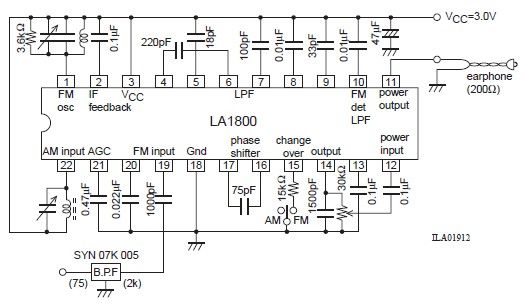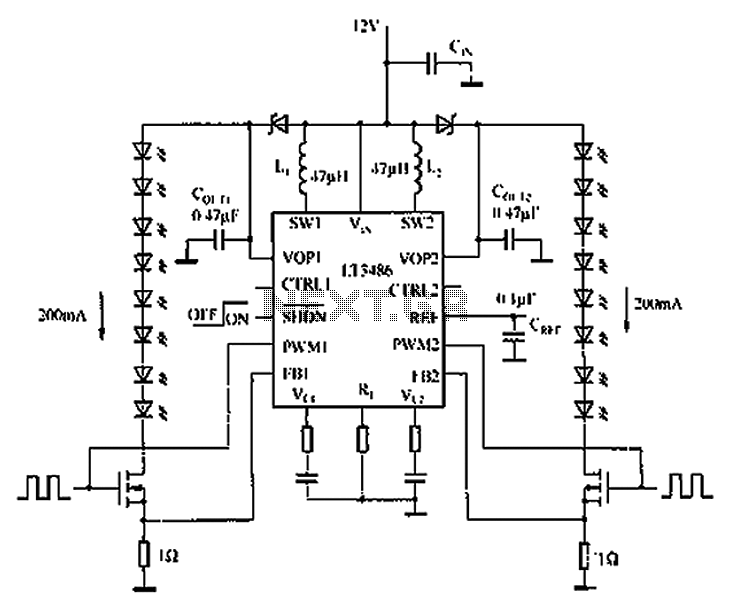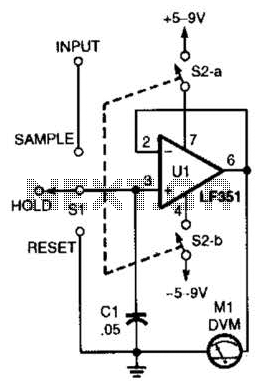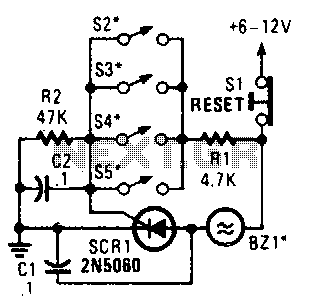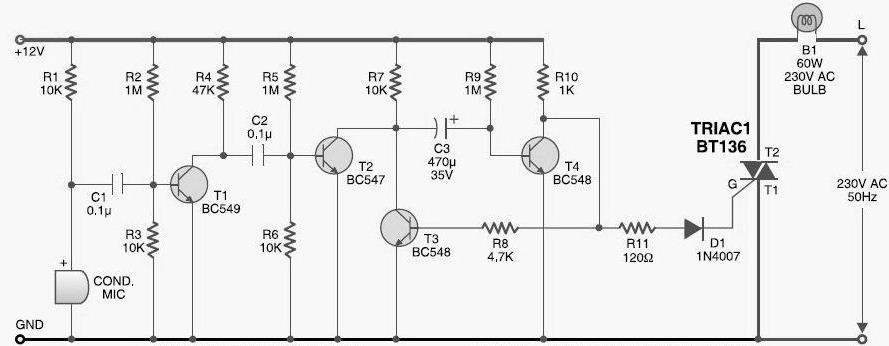
Units from the MAX4100 4101 gain buffer circuit diagram
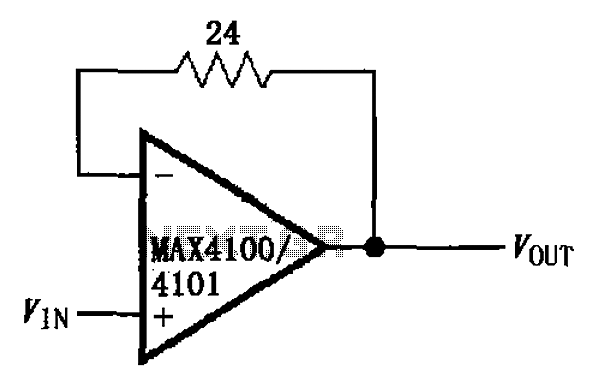
The circuit illustrated is a unit gain buffer circuit utilizing the MAX4100/4101 operational amplifiers. It incorporates a small resistor (24 ohms) within the feedback loop of the amplifier, thereby establishing a unity gain buffer. This configuration maximizes the bandwidth of the circuit while minimizing overshoot and optimizing settling time. Additionally, the resistor mitigates the adverse effects of parasitic inductance and capacitance, enhancing the stability of the circuit and reducing errors attributed to the input bias current. The output voltage (VOUT) is equal to the input voltage (VIN).
The MAX4100/4101 unit gain buffer circuit is designed to provide high-speed signal buffering with minimal distortion. The operational amplifiers in this configuration are known for their low input offset voltage and high slew rate, making them suitable for applications requiring fast response times. The inclusion of a 24-ohm feedback resistor is a strategic choice; it balances the need for stability against the potential for increased noise and distortion.
In this circuit, the feedback resistor serves multiple purposes. Primarily, it helps to control the gain of the amplifier, ensuring that the output remains a faithful reproduction of the input signal without amplification or attenuation. This is crucial in applications such as signal conditioning, where preserving the integrity of the signal is paramount.
Moreover, the resistor's presence in the feedback loop aids in dampening oscillations that may arise from the inherent capacitance and inductance present in the circuit. By providing a controlled path for feedback, the resistor stabilizes the operational amplifier's response, allowing for a fast settling time that is essential in high-speed applications.
The characteristics of the MAX4100/4101 make them ideal for use in a variety of electronic applications, including audio processing, sensor signal buffering, and data acquisition systems. The unit gain buffer configuration ensures that the circuit can drive capacitive loads effectively, making it suitable for interfacing with other stages of a signal processing chain without introducing significant phase shifts or delays.
Overall, this unit gain buffer circuit exemplifies effective design principles in electronic engineering, focusing on stability, speed, and signal integrity, which are critical for modern high-performance electronics. As shown by FIG MAX4100/4101 unit gain buffer circuit constituted. This circuit uses a small resistor (24 ) placed in the feedback loop amplifier constituting a unity gain buff er, so the maximum bandwidth of the circuit, and has a low overshoot and fast settling time; at the same time this resistance can inhibit parasitic inductance and capacitance of the negative influence the stability of the circuit best, it can also reduce the error caused by the input bias current. VOUT VIN.
The MAX4100/4101 unit gain buffer circuit is designed to provide high-speed signal buffering with minimal distortion. The operational amplifiers in this configuration are known for their low input offset voltage and high slew rate, making them suitable for applications requiring fast response times. The inclusion of a 24-ohm feedback resistor is a strategic choice; it balances the need for stability against the potential for increased noise and distortion.
In this circuit, the feedback resistor serves multiple purposes. Primarily, it helps to control the gain of the amplifier, ensuring that the output remains a faithful reproduction of the input signal without amplification or attenuation. This is crucial in applications such as signal conditioning, where preserving the integrity of the signal is paramount.
Moreover, the resistor's presence in the feedback loop aids in dampening oscillations that may arise from the inherent capacitance and inductance present in the circuit. By providing a controlled path for feedback, the resistor stabilizes the operational amplifier's response, allowing for a fast settling time that is essential in high-speed applications.
The characteristics of the MAX4100/4101 make them ideal for use in a variety of electronic applications, including audio processing, sensor signal buffering, and data acquisition systems. The unit gain buffer configuration ensures that the circuit can drive capacitive loads effectively, making it suitable for interfacing with other stages of a signal processing chain without introducing significant phase shifts or delays.
Overall, this unit gain buffer circuit exemplifies effective design principles in electronic engineering, focusing on stability, speed, and signal integrity, which are critical for modern high-performance electronics. As shown by FIG MAX4100/4101 unit gain buffer circuit constituted. This circuit uses a small resistor (24 ) placed in the feedback loop amplifier constituting a unity gain buff er, so the maximum bandwidth of the circuit, and has a low overshoot and fast settling time; at the same time this resistance can inhibit parasitic inductance and capacitance of the negative influence the stability of the circuit best, it can also reduce the error caused by the input bias current. VOUT VIN.
